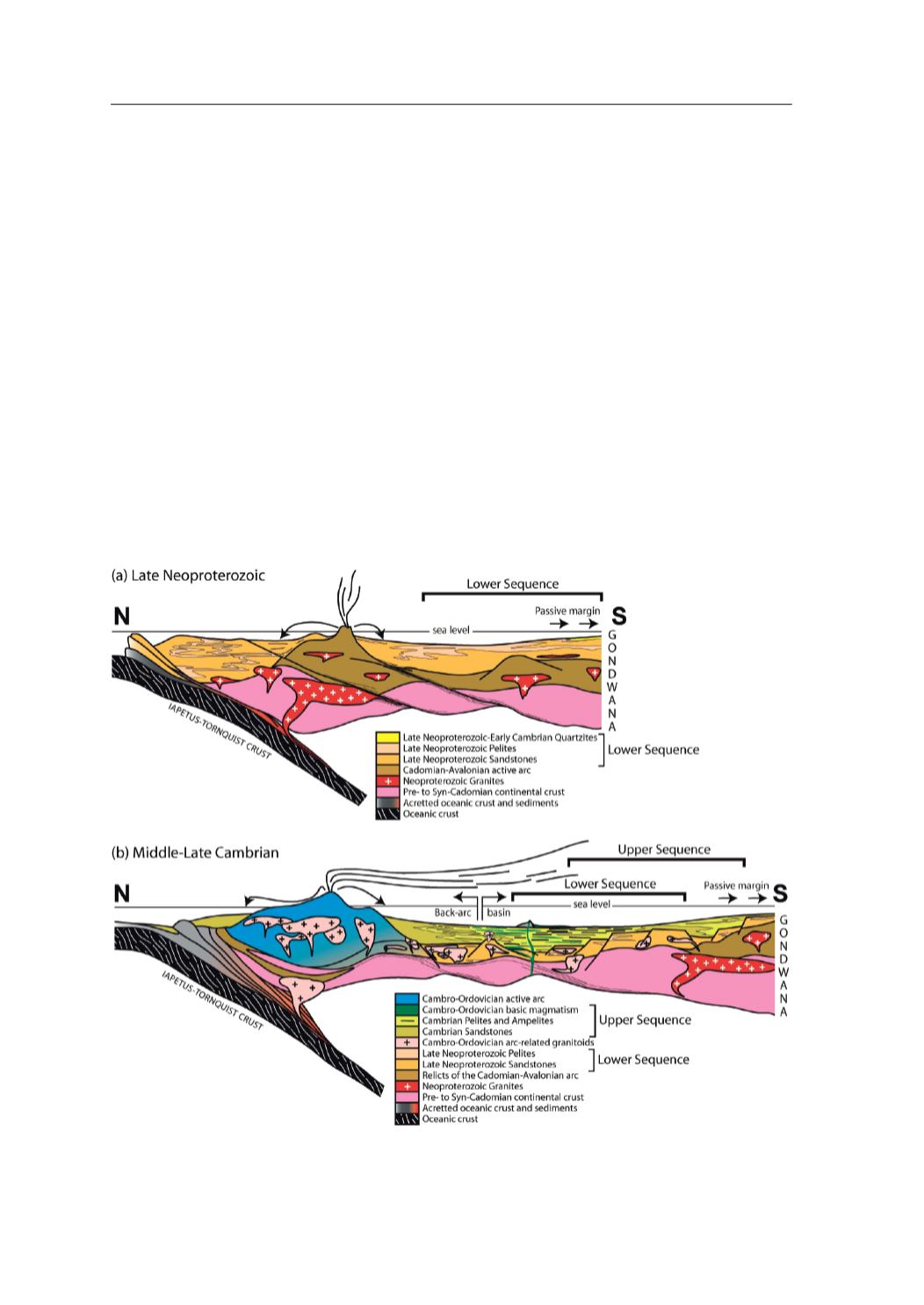
three of them, while in the Forcarei Unit some
metaquartzites appear, orthogneisses are very
scarce, and the metabasites are restricted to a
thin level at the base of the unit (Figs. 2 and 4).
The metamorphic evolution is complex and will
be described below. Retrogressed eclogites exist
in the Santiago Units, but they are completely ab-
sent in Lalín and Forcarei units (Rubio Pascual
et
al.
, 2002).
In the Ceán Unit, the Upper Sequence is con-
stituted by albite-bearing schists, alternating
with graphite-bearing schists and minor meta-
greywackes, metaquartzites, calc-silicate rocks
and metacherts. Alternations of mafic rocks
transformed into amphibolites and variably ret-
rogressed blueschists are abundant, notably a
thick mafic layer located at the base of the se-
quence, the Cambre Amphibolites (Fig. 6b). The
Upper Sequence is best exposed in the Lamas de
Abade and Cercio units (Fig. 2). In the Lamas de
Abade Unit lithologies are very similar to those
described in the Ceán Unit, but the deformation
has a mylonitic character (Gómez Barreiro
et al.
,
2010a). The Cercio Unit contains a fragment of
the Upper Sequence similar to the middle and
upper part of this sequence as described in the
Malpica-Tui Complex, but in this case it is affect-
ed by lower metamorphic grade (Díez Fernández
et al.
, 2013).
In the uppermost part of the Basal Units, the
Agualada and Espasante units are constituted by
variably retrogressed calc-alkaline orthogneiss-
es, schists and paragneisses, amphibolites and
eclogites (Martínez Catalán
et al.
, 1996; Arenas
et al.
, 1997). Thin layers of ultramafic rocks oc-
cur along lithological contacts limiting the unit.
24
3. GEOLOGICAL FRAMEWORK
Fig. 7.
Cartoon showing the tectonic setting for the
(a)
Lower (Late Neoproterozoic) and
(b)
Upper (Middle-Late Cam-
brian) sequences of the Basal Units of the allochthonous complexes.








